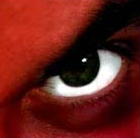The Great PCB Assault
That Won’t Go Away
By James Donahue
February 2005
The dangers of PCBs,
or polychlorinated biphenyls, were known as early as 1929, about 50 years after they were first put on the market. Unfortunately
it took the U.S. Environmental Protection Agency to ban the manufacture of this stuff in the United States,
but that wasn’t until 1977.
In the meantime, PCBs,
used in the manufacture of inks, dyes, paints, adhesives, carbonless papers, lubricants, flame retardants, surface coatings
and sealants, and industrial fluids, got spread everywhere and contaminated our world.
The PCB mess is a horror
story that has been in the news, but because it is a complex problem involving big corporations that don’t wish to pay
the cost of tackling such a massive cleanup, is being downplayed by the media.
Once considered a miracle
product for manufacturers because of their water insolubility, high tolerance for heat and chemical stability, PCBs were manufactured
in various forms and used extensively by industry. Thus you can find PCB contamination in the soils around most industrial
sites in use prior to 1977, in and around public dumps and landfills, and any other place where industrial waste, old paint
cans, lubricating oil and inks were discarded.
Because tough laws governing
the disposal of these things were not in place until late in the game, PCBs got in the soil on private farms, township dumps
and numerous other places where the compounds were able to quickly find their way into drains, streams and eventually our
lakes.
It is estimated that
of the 1.25 billion pounds of PCBs produced in the US
since 1929, about 450 million pounds of it has found its way into the environment and into the world food chain. Because it
is a synthetic substance, it is chemically stable and resists biodegradation. It mixes with water so evaporates and returns
to earth by rainfall or in the settling of dust particles. Consequently low levels of PCBs are found throughout the world.
It has been found that
PCBs increase in concentration up to 1,000 times as they move up the food chain. Thus animals that feed on smaller creatures
have higher concentrations. Fish are an example of high PCB contamination.
PCBs are toxic to both
humans and animals. They are known to affect unborn children, sperm counts in males, impact the immune system, reduce thyroid
hormone levels, and may be a carcinogen. They are also shown to cause liver, kidney and nervous system disorders plus developmental
and reproductive abnormalities.
As noted above, PCBs
can be absorbed through the foods we eat, especially predator and bottom feeding fish. It also can be taken in through small
amounts of soil in the vegetables we eat. Old fluorescent lights may still contain transformers or ballasts that contain PCBs.
If these instruments fail, PCBs can leak out into the air we breath. Smoke from industrial accidents and especially electrical
fires may contain concentrations of PCBs.

